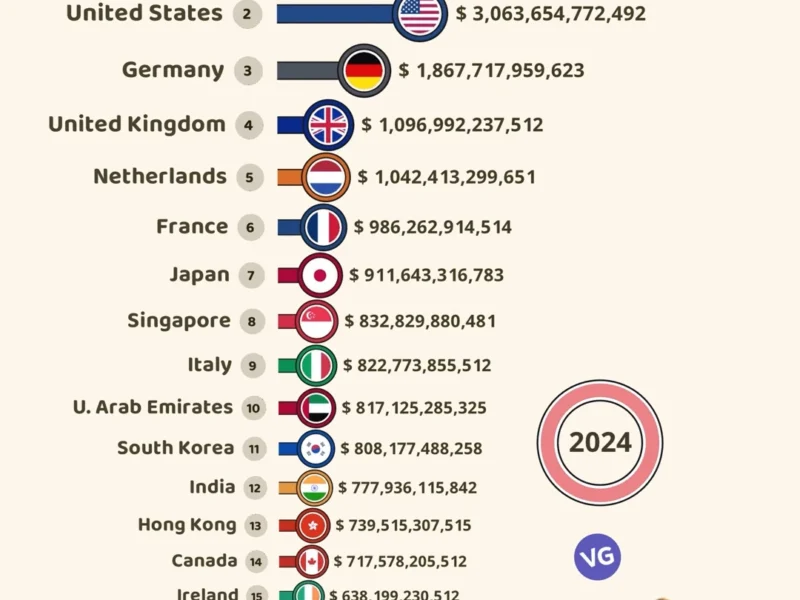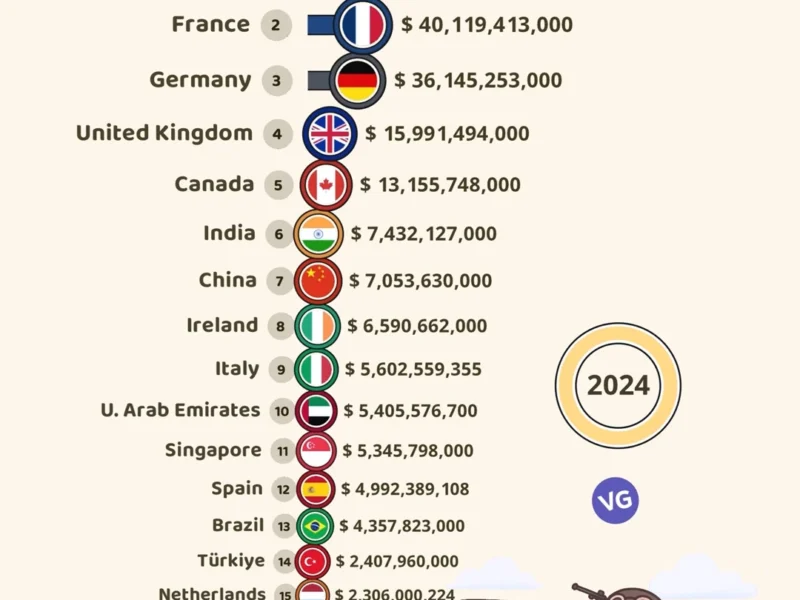A Staple of Culture, Cuisine, and Commerce
Olives are more than just a snack or salad topping—they are a symbol of heritage, health, and economic importance in many parts of the world. From ancient groves in Greece to sprawling orchards in Spain, olives remain a cornerstone crop across the Mediterranean and beyond. According to the Food and Agriculture Organization (FAO), global olive production remains dominated by a select group of nations in 2023, and the numbers are truly impressive.
Top Olive Producing Countries (2023)
| Country | Flag | Production (tons) |
|---|---|---|
| Spain | 🇪🇸 | 5,101,010 t |
| Greece | 🇬🇷 | 3,168,122 t |
| Italy | 🇮🇹 | 2,397,880 t |
| Türkiye | 🇹🇷 | 1,520,000 t |
| Portugal | 🇵🇹 | 1,194,990 t |
| Tunisia | 🇹🇳 | 1,077,206 t |
| Morocco | 🇲🇦 | 1,046,056 t |
| Egypt | 🇪🇬 | 1,034,310 t |
| Algeria | 🇩🇿 | 904,014 t |
| Syria | 🇸🇾 | 697,325 t |
| Saudi Arabia | 🇸🇦 | 391,034 t |
| Argentina | 🇦🇷 | 344,715 t |
| Peru | 🇵🇪 | 206,983 t |
| Jordan | 🇯🇴 | 169,458 t |
| Libya | 🇱🇾 | 147,411 t |
| Lebanon | 🇱🇧 | 136,176 t |
| Chile | 🇨🇱 | 131,440 t |
| Albania | 🇦🇱 | 117,618 t |
| Iran | 🇮🇷 | 113,789 t |
| Palestine | 🇵🇸 | 110,771 t |
🌍 Top 10 Olive Producers in 2023
1. Spain – 5,101,010 tons
Spain continues to reign supreme as the world’s leading olive producer, responsible for over 5 million tons of olives in 2023. Andalusia, in particular, is the epicenter of this production, with its ideal climate and centuries-old olive-growing traditions.
2. Greece – 3,168,122 tons
Greece, known for its high-quality olive oil, comes in a strong second. Olive trees cover a significant portion of Greek agricultural land, and olives remain a vital part of its economy and cuisine.
3. Italy – 2,397,880 tons
Italy is famous for its artisanal olive oils and diverse varieties of olives. Though production volume is lower than Spain and Greece, Italy places a premium on quality and regional specialties.
4. Türkiye – 1,520,000 tons
Turkey’s olive industry is rapidly growing, with significant investments and increasing exports. The country’s olives are primarily grown in the Aegean and Marmara regions.
5. Portugal – 1,194,990 tons
Portugal has been expanding its olive groves in recent years. Its olive oil is gaining international recognition for sustainability and taste.
🌿 Other Notable Producers
- Tunisia (1,077,206 t) and Morocco (1,046,056 t) are major players in North Africa.
- Egypt impresses with 1,034,310 tons, driven by increasing local and international demand.
- Algeria (904,014 t) and Syria (697,325 t) also contribute significantly despite regional challenges.
Notably, Saudi Arabia and Argentina appear on the list, reflecting the spread of olive cultivation beyond traditional Mediterranean boundaries.
Why Olive Production Matters
Olive farming is not just about food—it’s about sustainability, economy, and culture:
- Economic Engine: In countries like Spain and Greece, olive oil exports are vital to GDP.
- Cultural Heritage: Many regions have grown olives for thousands of years.
- Health Trends: The global rise in demand for heart-healthy olive oil boosts production worldwide.
Looking Ahead
With climate change affecting traditional farming zones, the future of olive production may see shifts in where olives grow best. However, the Mediterranean basin remains the stronghold of both quantity and quality.
As demand for olives and olive oil continues to grow globally, these top-producing nations will play an increasingly important role in feeding both traditional markets and health-conscious consumers around the world.
📊 Source:
- FAO – Food and Agriculture Organization of the United Nations, Data Visualization by VG



